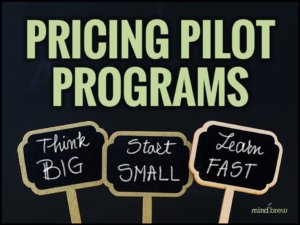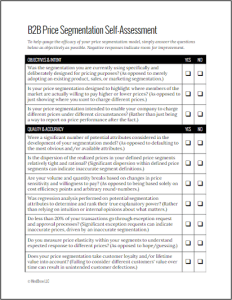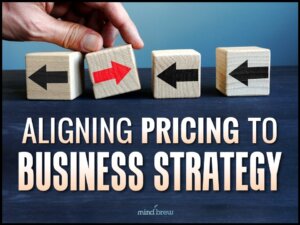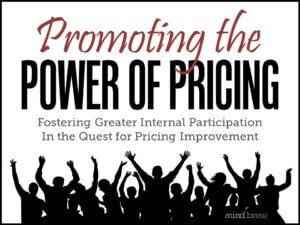Few things in life are more visually satisfying than watching a long run of dominoes topple one after the other.
And of course, dominoes make a pretty good metaphor for the way that one small change can lead to a long series of events.
In a business setting, people often use the phrase “domino effect” for a negative cascade of events. Maybe one misplaced comma in a spreadsheet causes an incorrect report that leads to a bad decision that tanks revenues for an entire quarter. Or maybe one bad hire rubs off on the whole team, leading to lower productivity for everyone.
But the domino effect can also be positive. If your pricing team gets one good quick win, that can set you up for your next successful project. Why does that work? Here are five reasons:
- Immediate Impact: With a small project, you can usually see the impact right away. Sure, it might not be huge, but it’s still gratifying for the team to see that they have accomplished something. That builds trust and camaraderie, and that gets the team energized about the next projects. It’s a great way to start building momentum.
- Easier Management: Smaller scale means fewer variables, making it simpler to manage, monitor, and adjust as required. It’s less likely that your project will get bogged down in endless meetings, and it’s more likely that you’ll succeed.
- Risk Mitigation: By the same token, it’s easier to address and resolve challenges in a smaller project than in a complex, larger one. Things are just less risky when you have fewer variables and shorter timelines.
- Stakeholder Buy-in: Some of the most difficult challenges pricing teams face come from internal politics. If you can get some quick success, you can prove the value of your ideas to management before internal conflict derails things. This can also amplify the domino effect by getting more people on board with future, larger projects.
- Team Morale: Everyone loves a winner. If you’ve ever lived in a city where a sports team wins a championship, you’ve seen how a huge group of people can become fans overnight. When your team is succeeding, you’ll find it easier to keep current team members engaged and to attract new people to the cause.
Clearly, starting a positive domino chain has a lot of potential benefits. But if you’ve ever set up a row of dominos yourself, you know that it can take some time. In fact, the people who set world records for dominos often take days or weeks to get everything set up.
In the same way, you have a much better chance of having a successful outcome if you do a little bit of planning before you launch an attempt to get a quick win. Some types of projects are much more likely to succeed — and succeed quickly — than other types of projects.
Fortunately, the team here at the PricingBrew Journal has done some of the hard work for you. We’ve researched which of these small projects are most likely to set off a positive chain reaction, and we highlight 15 of them in Identifying and Capturing Profitable “Quick Wins”. This webinar also offers tips for setting expectations and avoiding potential minefields.
After you’ve identified a project you want to tackle, you should also check out Pricing Pilot Programs. It explains how to scope a trial project and offers five fundamental building blocks you’ll need to succeed.
Setting dominoes up for a run isn’t hard — but it does take some planning and careful work. In the same way, starting a positive chain reaction for your pricing team isn’t that difficult. And with just a little bit of planning and work, you’ll get everything toppling in the right direction.















